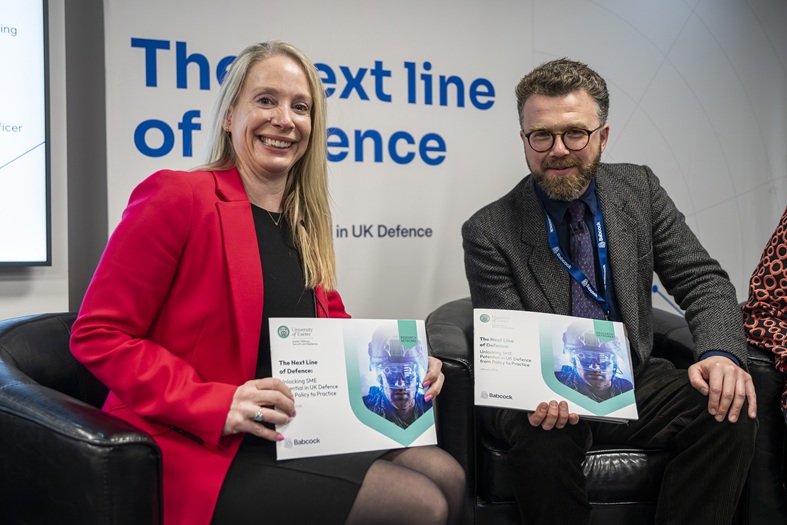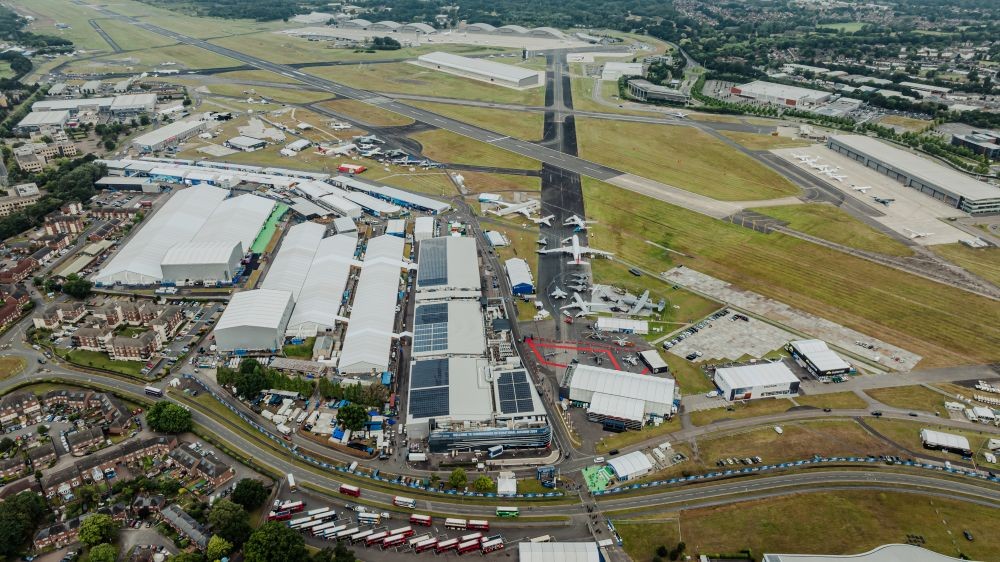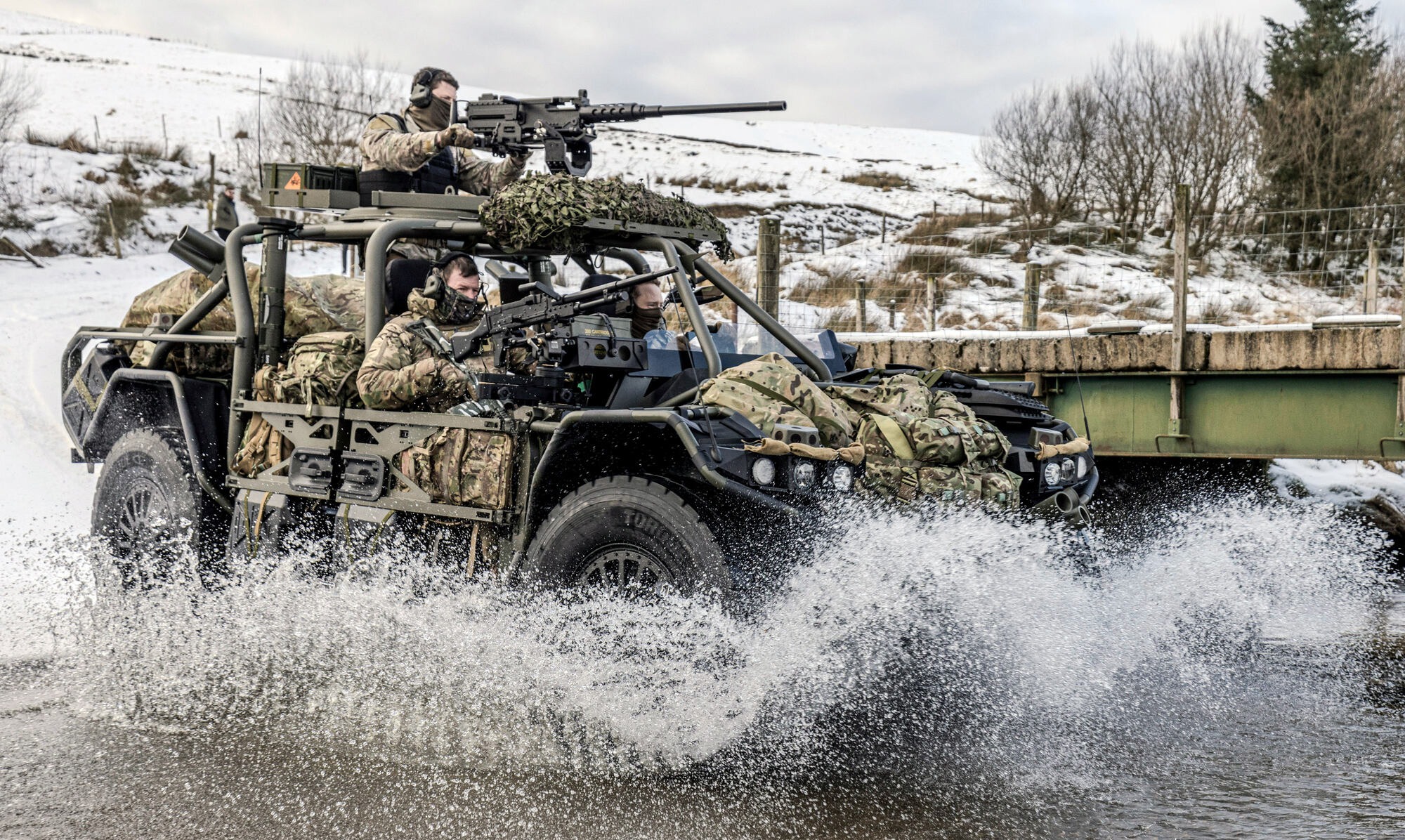Next generation unmanned system unveiled at DSEI

Courtesy
BAE Systems
The new system is similar to a water-borne drone. At 13 metres long, the vessel swims around a naval task force, while being remote controlled from a rig. The systems can be used to identify threats such as mines or collect intel on enemy ships.
The kit was put through its paces today in a demonstration at the Defence and Security Equipment International (DSEI) conference in London, where it protected HMS Argyll in a harbour force protection. The system, attached to a PAC24 rigid inflatable boat - designed and built by BAE Systems, that is the standard sea boat for the Royal Navy - navigated the river bed, detecting possible threats and feeding information back to HMS Argyll. The demonstration was observed by Defence Secretary Ben Wallace.
Defence Secretary Ben Wallace said: “MAST-13 is pioneering the future of Unmanned Surface Vehicles for our world-leading Navy. The development of unmanned technology is vital for success in modern warfare, going beyond the capability of traditional ships to attack and defend in uncertain environments.
“As more advanced technology and new threats continue to evolve, collaborative technology development ensures we are constantly pushing the boundaries to give our armed forces the best capabilities possible.”
The new system has been unveiled as part of the Maritime Autonomy Surface Testbed (MAST) 13, a programme developed by the Defence Science and Technology Laboratory (Dstl) in collaboration with L3Harris. The purpose of MAST 13 is to further understanding of how Unmanned Surface Vehicles (USVs) can be used in defence.
USVs could offer a potent capability for the Naval fleet; increasing protection and information for the UK’s powerful war ships by detecting threats and operating beyond the visual line of sight.
Admiral Tony Radakin CB ADC, First Sea Lord and Chief of the Naval Staff, said: “I am extremely excited about the technology developed for MAST-13 and its potential to enhance Naval capability. This builds on our existing autonomy capabilities, including the state-of-the-art Maritime Autonomous Platform Exploitation (MAPLE) software integration system developed by Dstl and industry partners.
I look forward to seeing the further developments in sensor and countermeasure technologies that this could enable, and the increased reach and lethality this will bring to our ships.”
MAST-13 will be demonstrating its capabilities alongside PAC24 – an unmanned autonomous vessel funded by NavyX, the Royal Navy’s innovation fund announced earlier this year.
Alasdair Gilchrist, Programme Lead for MAST at Dstl, said: “This has never been more relevant thanks to a global technology trend towards systems with higher levels of autonomy. This could buy us increased ‘sea control’. Harnessing autonomy will help us increase capability at affordable cost and in a faster time frame.”
Working with UK firm L3Harris (formerly ASV Ltd), MAST-13 was built utilising MoD’s core S&T Budget. Dstl will continue the concept development programme through a series of work packages aimed at supporting the Royal Navy through fast integration technology that the Navy can incorporate into their operations.
Positioned as an autonomy and lethality accelerator, NavyX, brings together the Royal Navy, Royal Marines, scientists, industry and engineers, working together to develop unparalleled new capabilities in far more rapid timescales than traditional procurement. By collaborating on innovative technologies, Dstl and the Navy are pushing the development of advanced maritime autonomy and potent unmanned systems.
Mike Woods, Chief Technologist for BAE Systems’ Maritime Services business, said: “This technology represents a huge step forward in the interaction between human and machine, combining sophisticated autonomous technology with human capabilities to overcome many of the challenges faced in difficult conditions at sea.”
The version of the autonomous P24 RIB on show at DSEI has been modified for optional unmanned operation and fitted with additional sensors and effectors including a high-resolution optical and thermal camera and Long Range Acoustic Device (LRAD) system, capable of emitting warning messages at distance. It is also equipped with automated navigational decision-making technologies, freeing up operators to focus on mission critical information from afar.
The P24 has pre-programmed intelligent behaviours to position itself appropriately in relation to a potential threat. However, its planned weapons system, developed by MSI Systems with BAE Systems, remains firmly under a human operator’s control, ensuring that while the vessel can operate and navigate autonomously, there will always be a highly-trained operator, making the final decision on engagement and targeting.
The demonstrations highlight the collaborative effort of industry working alongside Dstl partners in supporting the future of the Royal Navy, and the advancement of technology in providing non-lethal and lethal advantage to our military forces.
First introduced on an experimental basis in 2015 and trialled as part of the Royal Navy’s Unmanned Warrior exercise in 2016, BAE Systems is working with the Ministry of Defence to continue a series of capability demonstrations, including NATO trials, designed to further test the integration of the technology with existing warship combat management systems trials and its planned weapons systems.
Woods added: “For the past four years we have been working in collaboration to develop this ‘first of its kind’ technology. We are proud to have matured autonomous maritime technology significantly, positioning the UK as a forward thinker in this unique space and providing a crucial advantage where it counts.”












